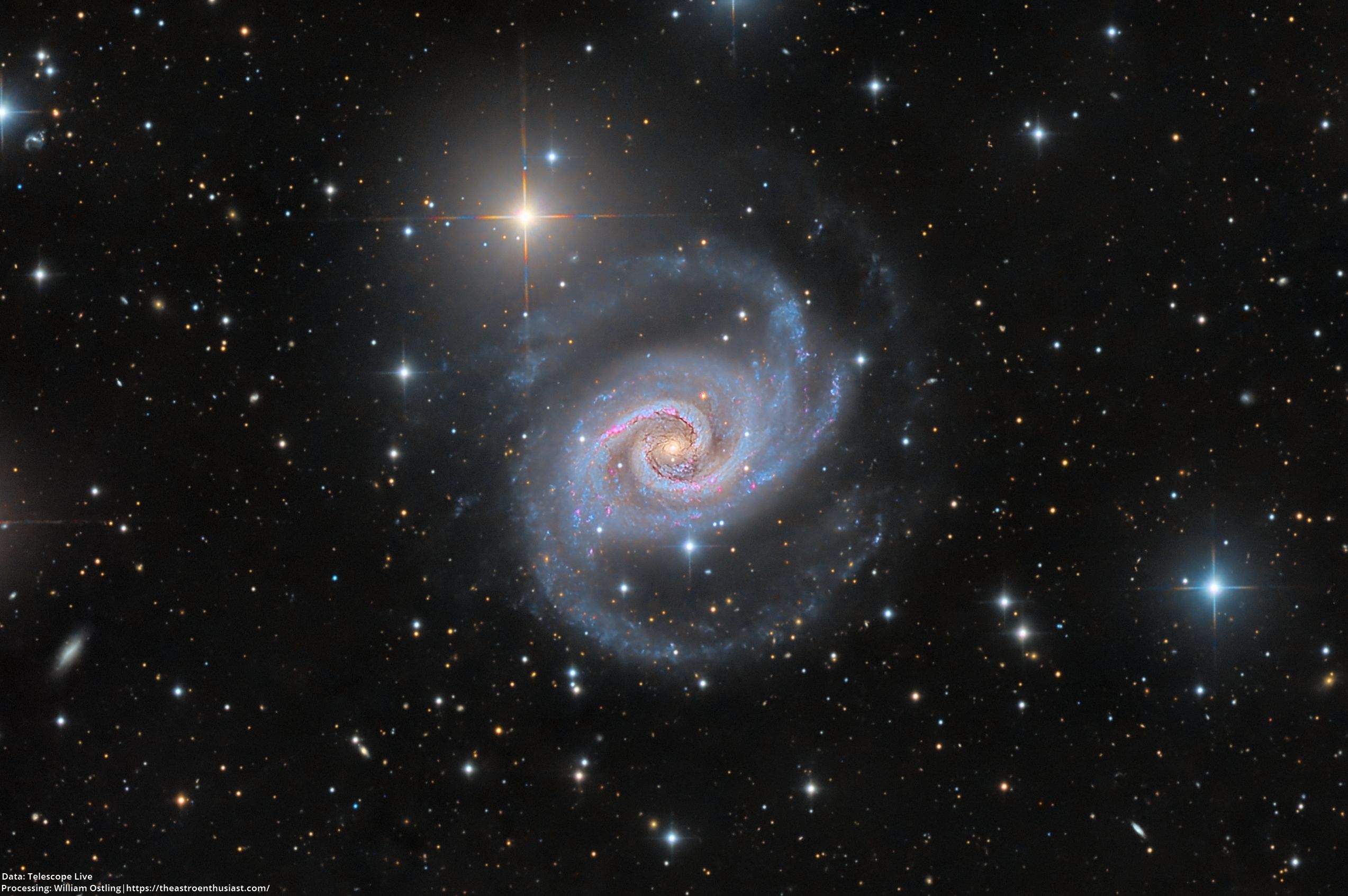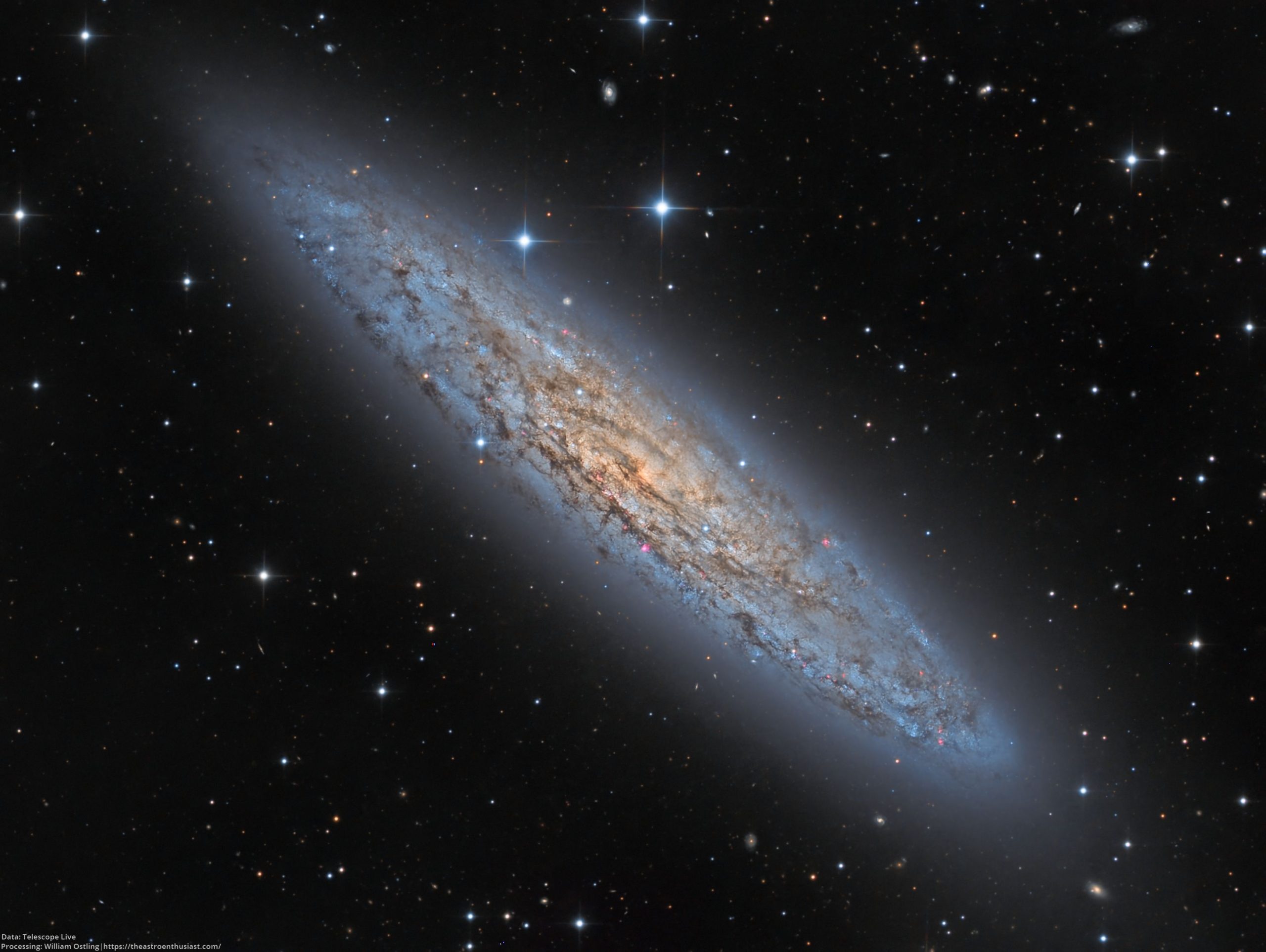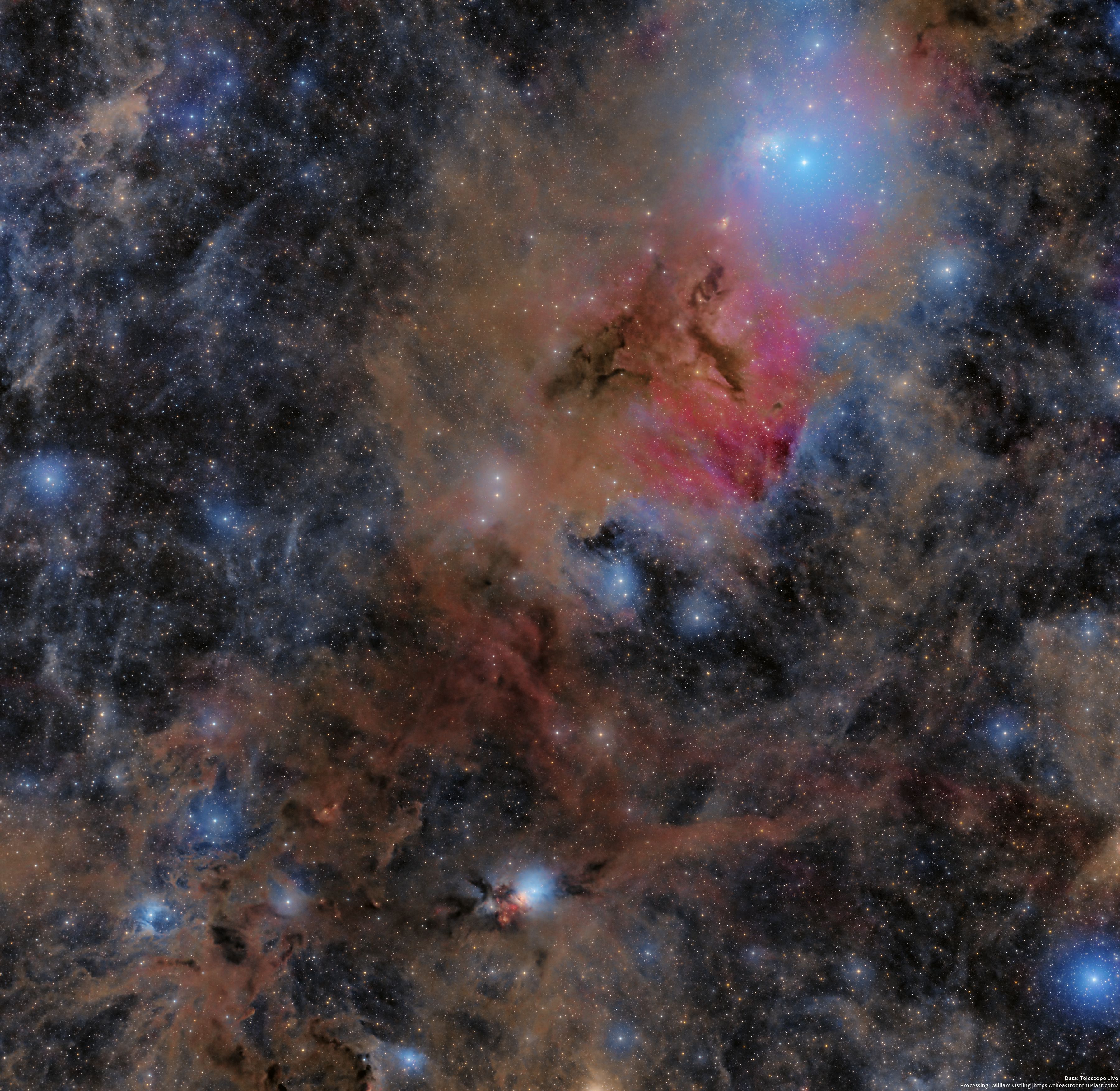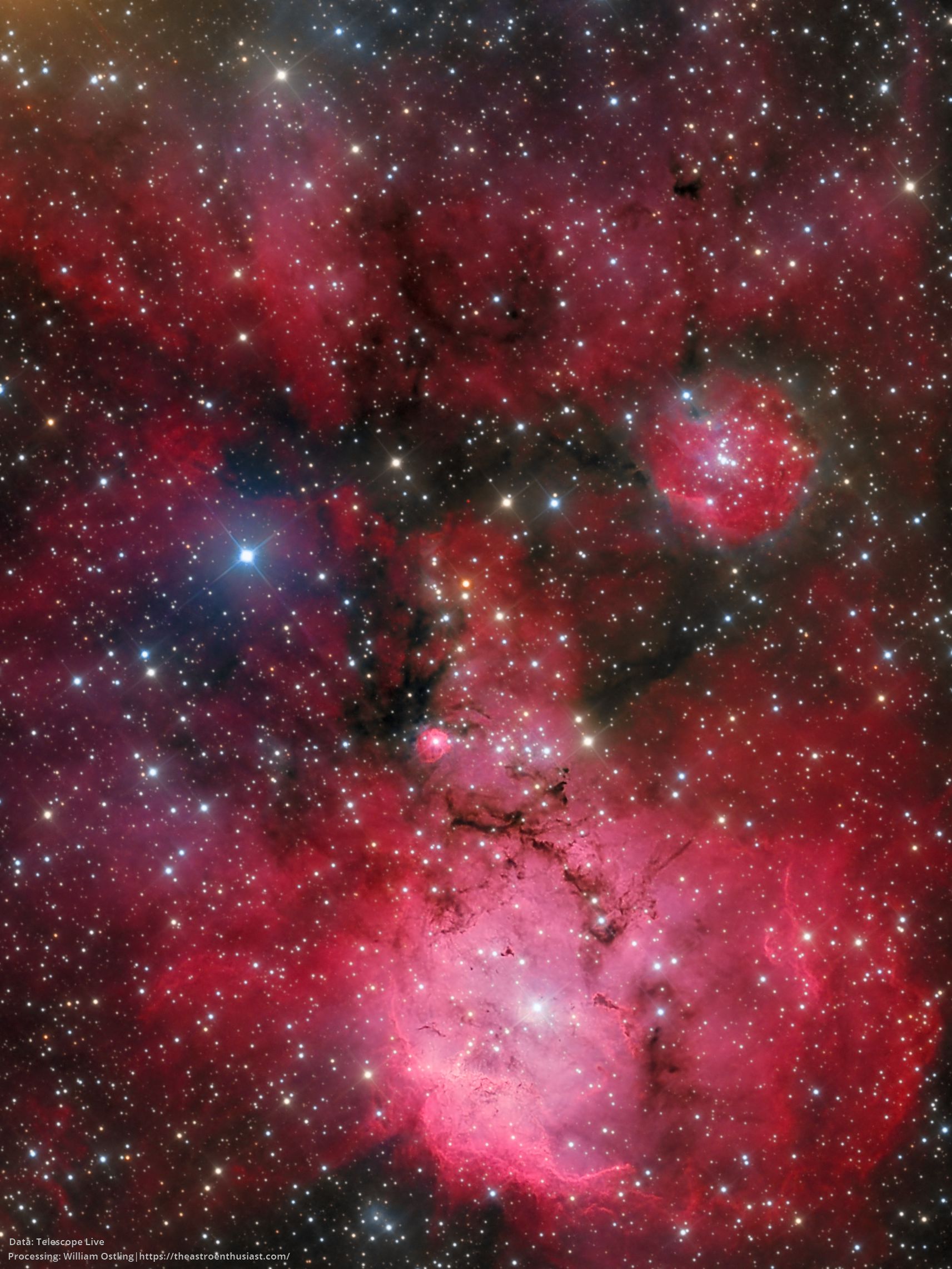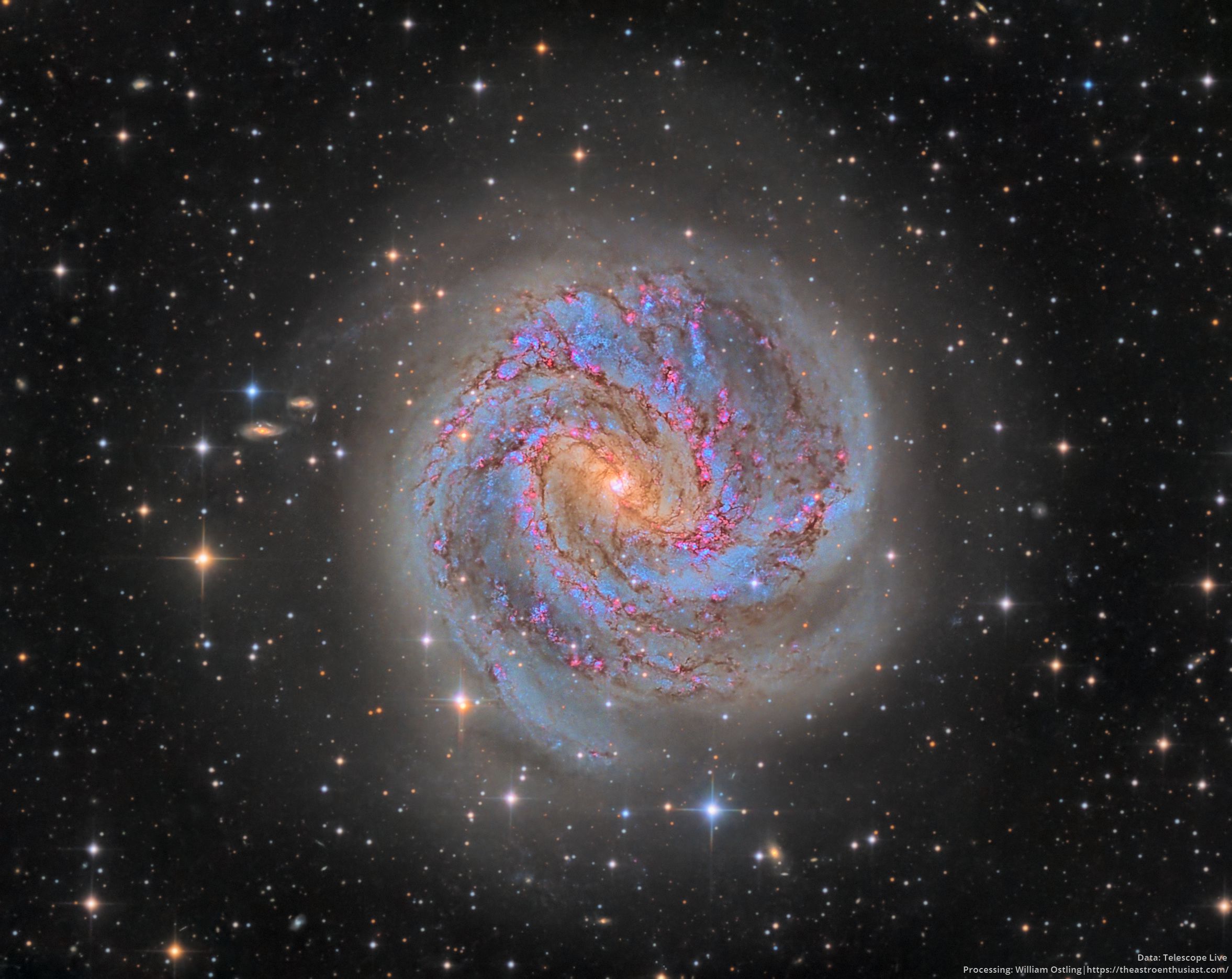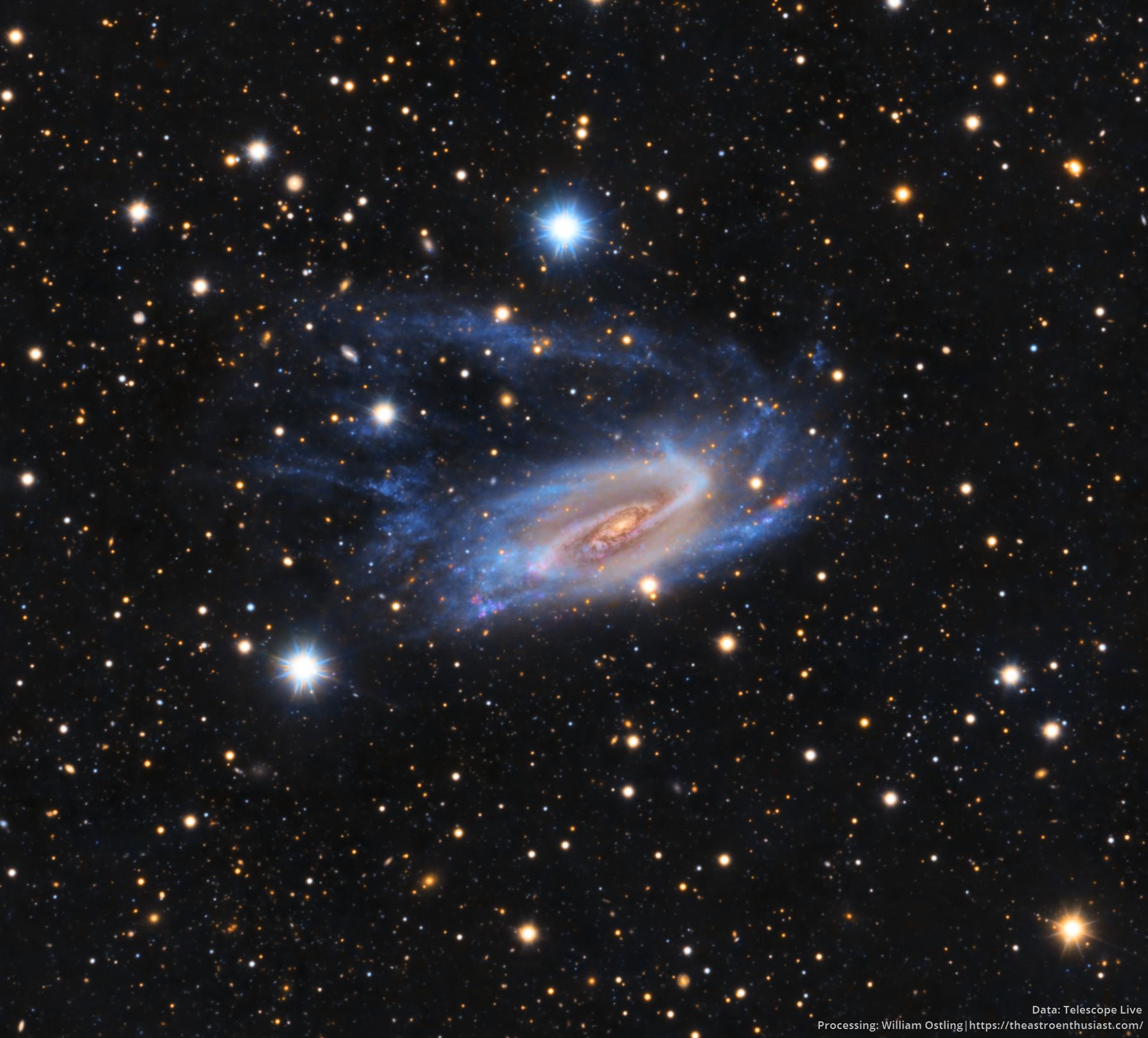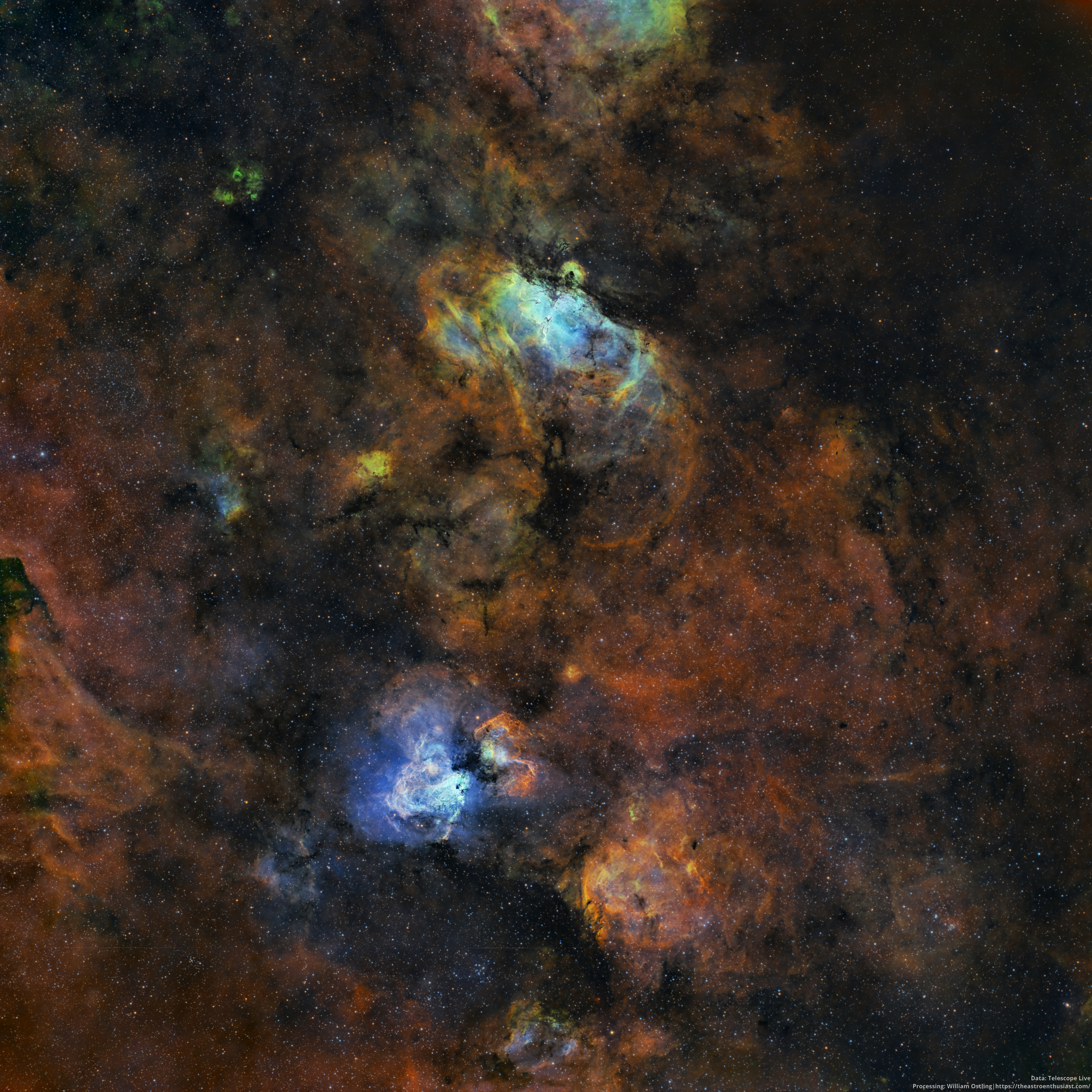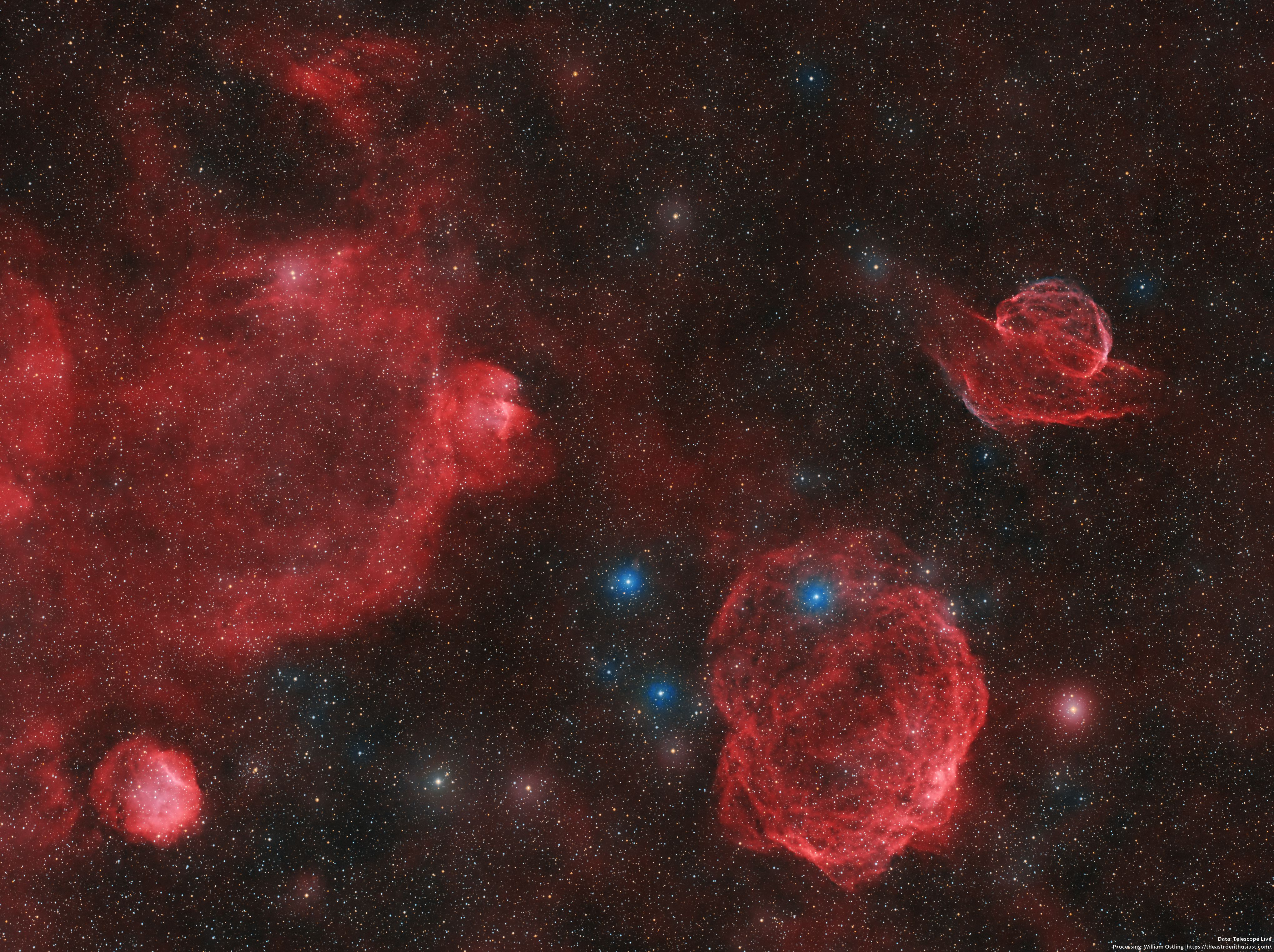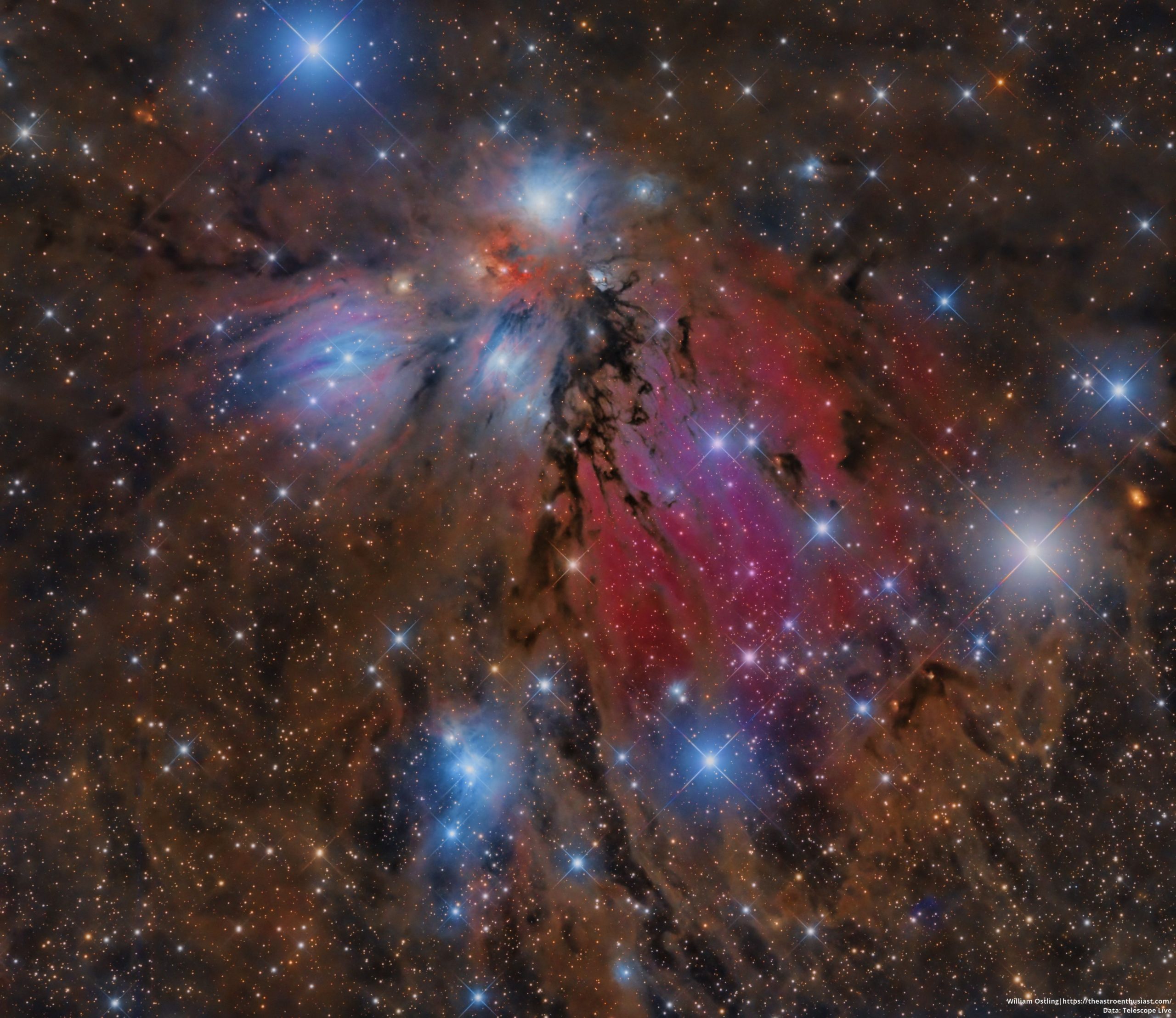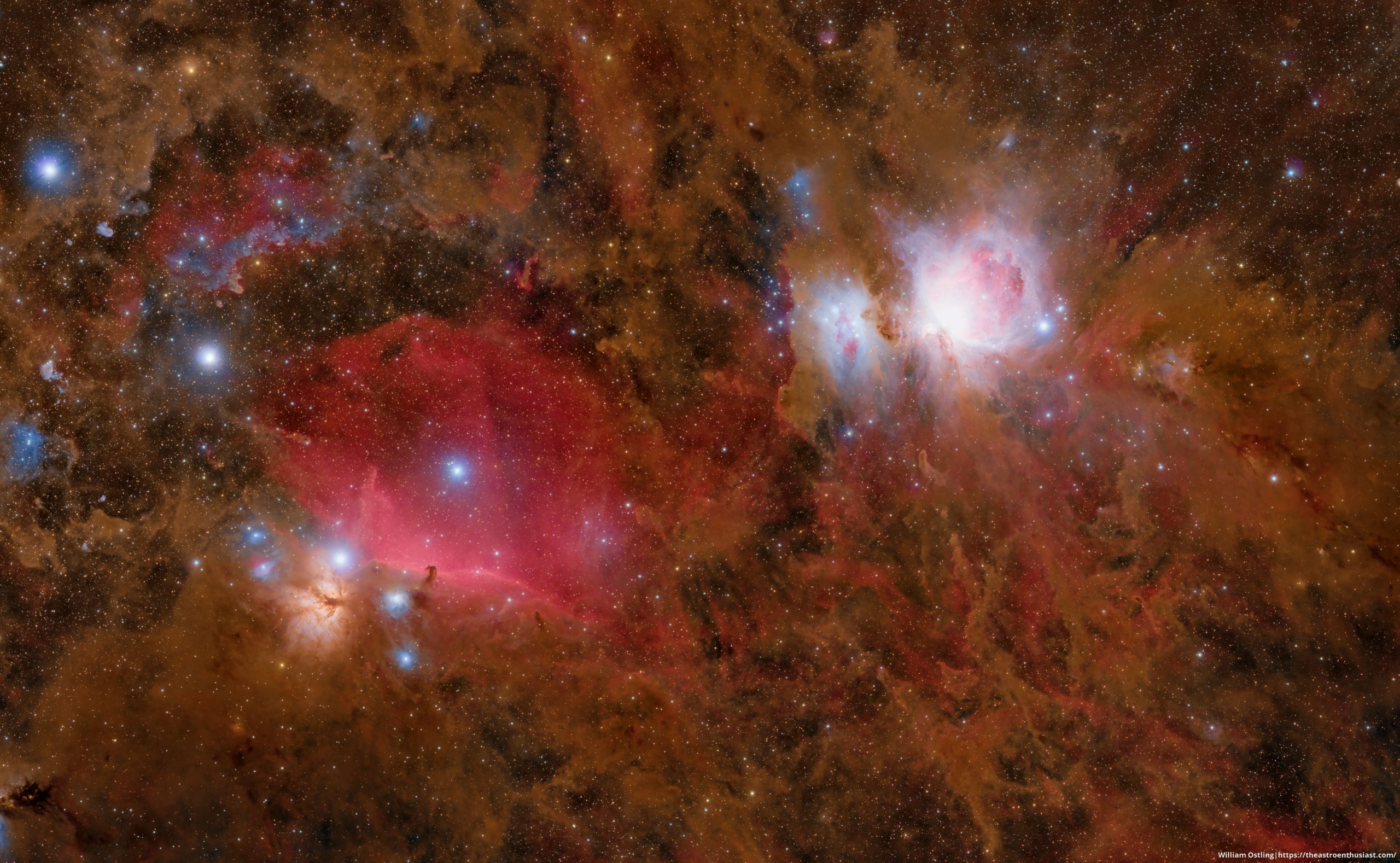The Spanish Dancer Galaxy
This is another image from telescope live, NGC 1566. This was a really tough image to stack, as there was a ton of uncalibrated dust motes in a lot of the frames, and there were a lot of dark artifacts on the brightest stars. Additionally, almost half of the frames had airplane trails that wouldn’t calibrate out. I ended up using the Adam Block method of selective rejection to try and remove a lot of the worst parts during stacking, and it seemed to work pretty well. […]
Read more